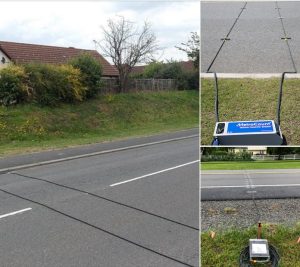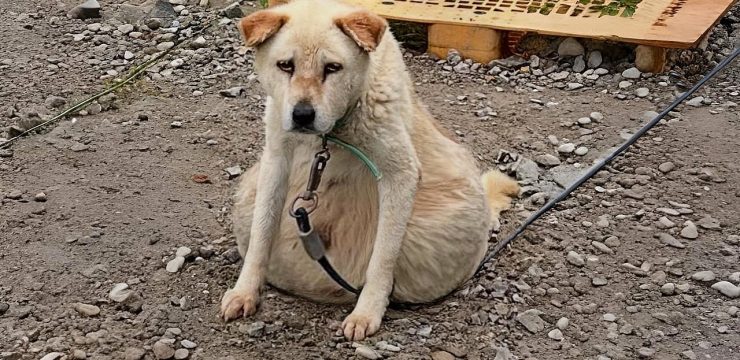The next time you find yourself cruising down the highway or driving through a quiet residential neighborhood, take a moment to pay close attention to the road beneath your tires. If you look carefully, you might spot one—or even two—thin black rubber cables stretched across the pavement. They might seem random or even out of place, but rest assured, they’re not there by accident.

Most drivers never think twice about these strange black tubes. They roll right over them without a second thought and rarely stop to wonder what they are or what purpose they serve. And yet, they’re an important tool used by transportation departments all across the country. If you’ve always been curious about these mysterious black cables, you’re about to get your answer.
These tubes are known as road tubes, and they’re far more important than they may appear. While they may look simple, road tubes are a highly effective method for collecting essential traffic data in both urban and rural environments. Transportation agencies use them as a non-intrusive, cost-efficient way to understand the flow and behavior of traffic in specific areas. These tubes provide critical insights that help shape road safety measures, improve transportation planning, and guide infrastructure development.
So how exactly do these road tubes work? It’s actually a pretty clever and low-tech system. Each time a vehicle’s tire runs over the tube, it sends a small puff of air through the rubber hose. This puff of air travels to a data collection device known as a counter, which is placed on the side of the road. The counter logs the burst of air as a data point. Over time, as more vehicles pass over the tubes, the counter collects hundreds or even thousands of entries.
This collected data isn’t just a tally of cars. There’s a surprising amount of information that can be gleaned from these air bursts. For instance, the timing between the bursts can help traffic analysts determine the volume of traffic at different times of the day. This helps identify peak traffic hours, periods of congestion, and even traffic flow throughout a 24-hour cycle.
When road tubes are placed in pairs a few feet apart, they provide even more valuable information. By comparing the time it takes for a vehicle to hit the first tube and then the second, the system can calculate the vehicle’s speed. It can also identify the direction the vehicle is traveling and even the type or class of vehicle—whether it’s a compact car, a pickup truck, a motorcycle, or a heavy-duty vehicle like a semi-truck. This classification data is vital for determining what kinds of vehicles frequent a road, which can influence decisions about road maintenance, repaving schedules, or the installation of truck restrictions.
All of this information feeds into a broader traffic management strategy. Transportation officials can use the data to evaluate whether a road is handling more traffic than it was designed for or if speeding is a chronic issue in a certain area. If the data shows that drivers are routinely going well over the posted speed limit, officials may consider adjusting the limit, installing traffic calming measures, or placing speed enforcement signage.
Similarly, if the data indicates a high volume of traffic on a road that wasn’t previously considered busy, city planners might decide to expand the road, add traffic lights, or install a new turning lane to ease congestion. This kind of data-driven decision-making helps create safer, more efficient roadways for everyone.
Another benefit of road tubes is that they don’t require a team of workers standing on the side of the road for hours manually counting vehicles or conducting surveys. The system is largely automated, reducing labor costs and minimizing human error. That’s one of the reasons why you’ll see these tubes used frequently in cities, small towns, and even rural areas. They provide a reliable snapshot of traffic behavior without disrupting daily travel.
If you’ve ever noticed these tubes and found yourself wondering what they were, now you know. They’re not electrical wires or part of some secret government project—they’re simply part of a smart and straightforward system that helps our roads work better.
What’s particularly impressive is how much insight can be drawn from something as simple as a burst of air. It’s a great example of how basic technology can still have a huge impact when used creatively and efficiently.
Many people are surprised to learn just how much traffic data is collected without cameras, GPS, or high-tech sensors. Road tubes are a low-cost, low-maintenance solution that can gather accurate and meaningful information quickly. They may look like nothing more than rubber strips on the road, but in reality, they are a key part of the infrastructure toolkit for transportation agencies nationwide.
The next time you drive over one, remember that your car just contributed a small piece of data to a much larger puzzle. That tiny puff of air helps experts make smarter decisions about how we move, how we commute, and how to make our roads safer for everyone.
So the next time someone riding in your car asks, “What are those black cables on the road?” you can answer with confidence. You might even impress them with your new knowledge about how those simple-looking tubes play a major role in transportation planning.
If this is the first time you’ve learned about what those mysterious black cables do, consider sharing this information with friends or family. A lot of people drive over them every day without ever knowing what they are or the important work they support behind the scenes.
Who knew something so small could make such a big difference?





